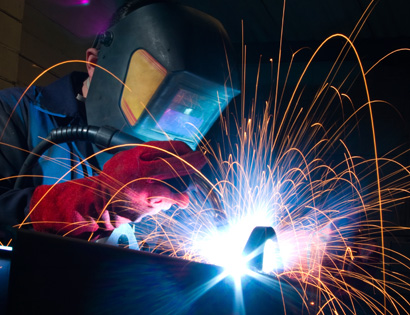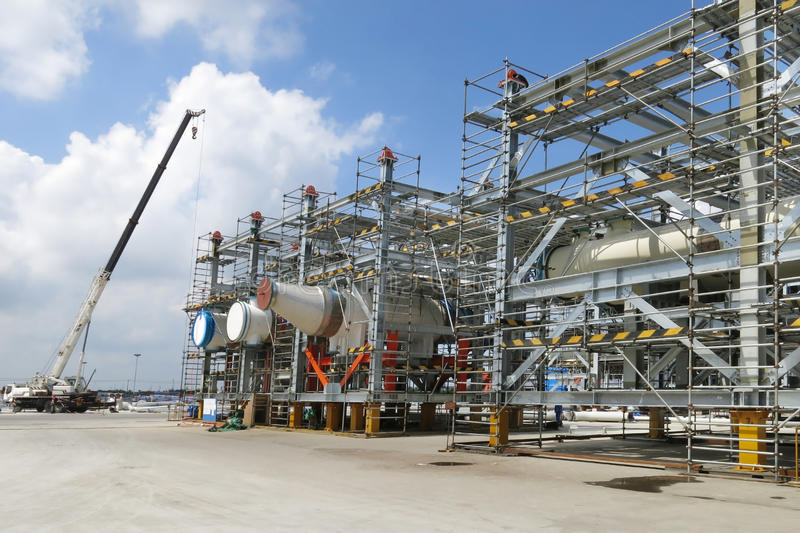




Why Automate HSE on Fabrication sites?
Annually, the metal manufacturing industry in the U.S. alone experiences 4.5 Million Injuries. Moreover, companies face significant expenses, exceeding $100,000, for the recruitment and training of seasonal staff.
Automation offers a solution to this challenge. By automating HSE processes, you will have a boundless HSE team capable of covering vast areas and multiple facilities.
Say goodbye to manual data collection; instead, rely on automated reports to monitor behaviors and identify trends effectively.
How Veunex Amplifies
Fabrication HSE Teams?
By automating tasks such as data collection, analysis of leading indicators, and real-time monitoring, Veunex empowers HSE professionals in fabrication facilities to dedicate more time to strategic decision-making and proactive risk management.
Given the expansive nature of fabrication yards and the diverse range of facilities, current observation and monitoring practices are often challenging for HSE personnel. Veunex addresses this challenge by offering immersive, real-time monitoring capabilities alongside automated data collection and analysis, ensuring high accuracy and efficiency.
Furthermore, in an industry characterized by constant change, Veunex alleviates concerns regarding training for seasonal workers and HSE personnel. With Veunex, organizations benefit from a limitless HSE team supported by automated reporting and comprehensive data—a true virtual HSE assistant.
Veunex revolutionizes HSE management in fabrication facilities by automating data collection, analysis, and real-time monitoring. This empowers HSE professionals to prioritize strategic decision-making and risk management. Its immersive, real-time monitoring and automated data analysis ensure precision and efficiency, while eliminating concerns about training seasonal workers with automated reporting and comprehensive data—a true virtual HSE assistant.
Make scalable HSE operation possible
We empower you to leverage the advantages of continuous automated data collection, enabling scalable HSE operations.
Double the HSE team capabilities
Each HSE personnel will be paired with an assistant, enhancing the capacity of the HSE team and amplifying their effectiveness.
Mitigate HSE administration cost
By minimizing HSE administrative duties, you can save valuable time, resources, and manpower, leading to substantial cost reductions.
Be aligned with
ISO 45001
Veunex fully aligns with ISO 45001, granting HSE teams access to current regulations and supplying reports and documents accordingly.
Veunex HSE Assistant on Fabrication Site
What Will You Gain?
With Veunex, you can empower your HSE teams by eliminating repetitive tasks, streamlining communication, broadening observation, analyzing data, and more—freeing you from concerns about seasonal staffing fluctuations and the need to hire new HSE personnel.
By automating tedious tasks within HSE operations at fabrication sites, personnel can redirect their focus towards critical aspects of their roles. Veunex Virtual HSE assistant furnishes them with real-time, analyzed data, expediting the decision-making process. Moreover, with properly positioned cameras, it comprehensively monitors fabrication yards and facilities, meticulously observing all activities to identify behavioral trends and bolster safety protocols. Amidst the dynamic landscape of fabrication sites, it also provides comprehensive documentation to streamline the training of new personnel while enhancing the proficiency of the existing HSE team on-site.
10X
Reduction in
Seasonal Hiring
and allocation of budget, and training time.
53%
less time
for device inspection, tag checks, and form controls.
2X
time saving
for preparing pre-job risk assessment documents.
2X
acceleration
in providing evidence and documents for ISO45001.
Client Testimonials

Veunex in Fabrication Sites
Unleash Your HSE Team's Potential
in Real Practice
Unlock the full potential of your HSE team with Veunex Virtual HSE Assistant! Through collaborative efforts with industry leaders like KAEFER, McDermott, and Winter, Veunex has achieved successful implementation across Fabrication Yards and Facilities. Explore our success stories to understand how we can empower your team.
Don’t hesitate – take the initial stride towards success today!
We will get back to you as soon as you unlock the resources.